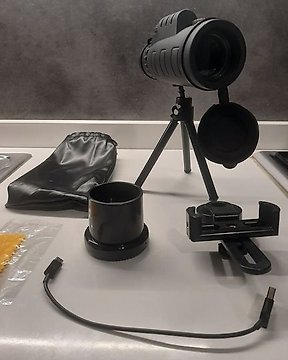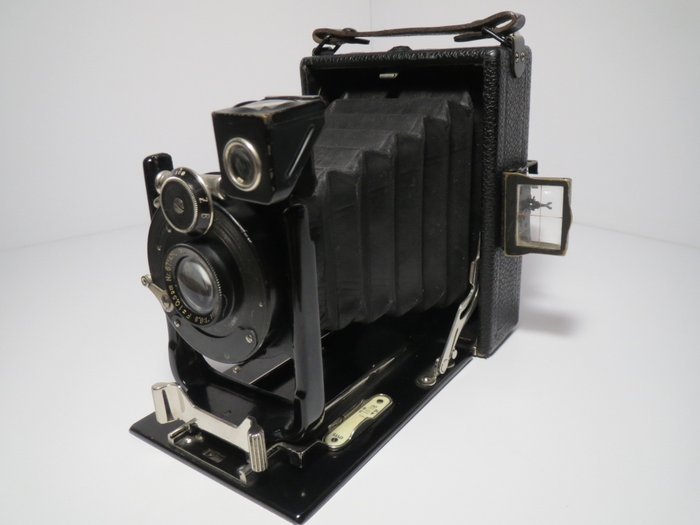
Monocular Monoculare 12 x 50
Nr. 19307947

Nr. 19307947

The Sirene is series of plate cameras produced by ICA in Germany. All models are of the folding plate design. They were made between 1914 and 1926.
The Sirene is series of plate cameras produced by ICA in Germany. All models are of the folding plate design. They were made between 1914 and 1926. The most common model is the Sirene 135. In 1926, when ICA merged into Zeiss Ikon, the Sirene line was continued with some new and improved features. The Zeiss Ikon models a rare, according to McKeown.
Lens and shutter
The Sirene 135 has an Extra-Rapid-Aplanat "Helios" lens. It's a two element lens, with both elements screwed into either end of the shutter. Its focal lenth is 13cm with a maximum aperture of f/8. A small lever under the lens allows a stepless setting of aperture. A series of 8, 12.5, 18, 25 and 36 is marked on the front plate. This is the old"so called "German" aperture series. Even at full aperture and in bright sunlight, the lens gives a rather dim image on the ground glass. The image is of course brightest in the center and almost completely dark in teh corners. Since it's not a reflex camera, the image is also upside-down. From a modern point of view, this seriously limits its usability.
Viewfinder and focus
There are two ways to focus the Sirene. The first way is ground glass focusing through the hood, the second way is scale focusing. You guestimate the distance to the subject and set de distance on the bed of the camera. The folding bed automatically locks the front plate on the "infinity" setting. This can be unlocked by slightly moving this scale towards the center of the camera. The distances marked on this scale are 1, 2,4,6,8,12m and inifinity.
Similarly, there are two ways to compose the image. For total control, you can use the ground glass back. The image of course is upside down and mirrored. Because of the limited lens aperture, f/8, the image is also very dim, even on a sunny day. The viewfinder is made of two small plano-convex lenses with a 45 degree mirror between them. It gives an image as shown in the first picture. Since this viewfinder can be used from the top of the camera and from the left side, images can be composed portrait and landscape
Body and plate holders
The Sirene folds op to a rather compact box. The body of the box is made of wood, covered by embossed black leather. The bed is a leather covered plate of metal. To open the camera, one needs to push a hidden release button on the top. The Sirene 135 name only appears once on this camera: on the leather carrying strap.
The back, with the ground glass and folding hood, can be shoved off after pushing the small lock lever on top of the camera. In the leather of the hood, the ICA company name is embossed. The body has two tripod mounts, both of them have the larger German screw thread.
The camera was supplied with a black doubled leather camera bag. The style of the leather is the same as on the camera. The bag can be locked by key and has enough room to hold the Sirene 135 and at least five glass plate holders.
Movements
The front plate is upheld by two columns. Two screws allow for some lens movements. The maximum rise is 1.6 cm and fall is 0.5 cm at most. The "normal" position is indicated on the right column by a small dot. The tilt is in the upward position only and possible to a very limited extent only.
Variations
The Sirene was made in two formats: The Sirene 105 for 6×9cm and 6.5×9cm , and the Sirene 135 for 9×12cm glass plates (When actually measuring the inner size of the 135's glass plate holders, 9.1×11.6cm would be the image format). McKeown notes that economy models were delivered with an f/11 Periscop or f/6.8 Eurynar lens, set in an Ibsor shutter. Another model has an Extra-Rapid-Aplanat "Baldour" 1:8/130mm lens in an ICA shutter.
So kaufen Sie auf Catawiki
1. Etwas Besonderes entdecken
2. Höchstgebot abgeben
3. Sichere Zahlung durchführen